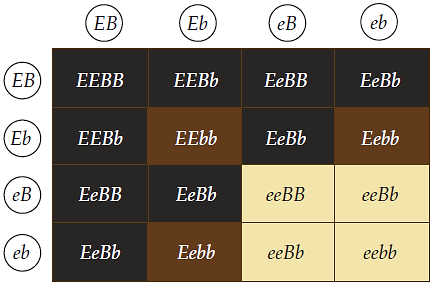
Figure 13.11
The F2 phenotypic ratio of 9:3:4, as shown above, is a result of a cross involving
A. two genes expressing complete dominance.
B. a gene expressing dominance and another gene expressing codominance.
C. two genes expressing codominance.
D. epistasis, in which one gene modifies the expression of the other gene.
E. multiple alleles.
Answer: D
You might also like to view...
DNA consists of two antiparallel strands of nucleotides held together by
A. peptide bonds. B. covalent bonds. C. ionic bonds. D. hydrogen bonds.
All EXCEPT which feature is characteristic of
millipedes? a. more pairs of legs than centipedes b. two pairs of legs per segment c. active predators d. cylindrical body shape e. inhabitants of the forest floor
Which of the following is NOT a nucleotide base found in DNA?
A. Adenine B. Thymine C. Guanine D. Cytosine E. Uracil
A major function of the Casparian strip of the endodermal cells of a root is to
(A) protect the meristem as the root tip grows through the abrasive soil particles (B) allow for expansion of the vascular cambium as the root grows laterally (C) control the movement of materials into the vascular cylinder of the root (D) initiate lateral root growth (E) serve as a site for the storage of excess sugars in the form of starch